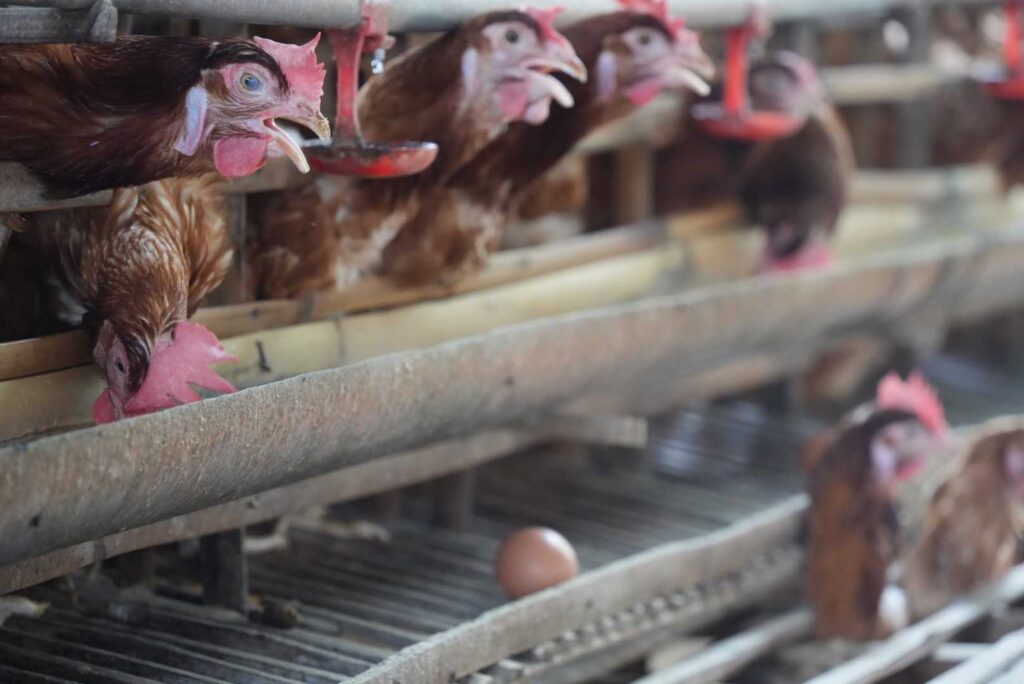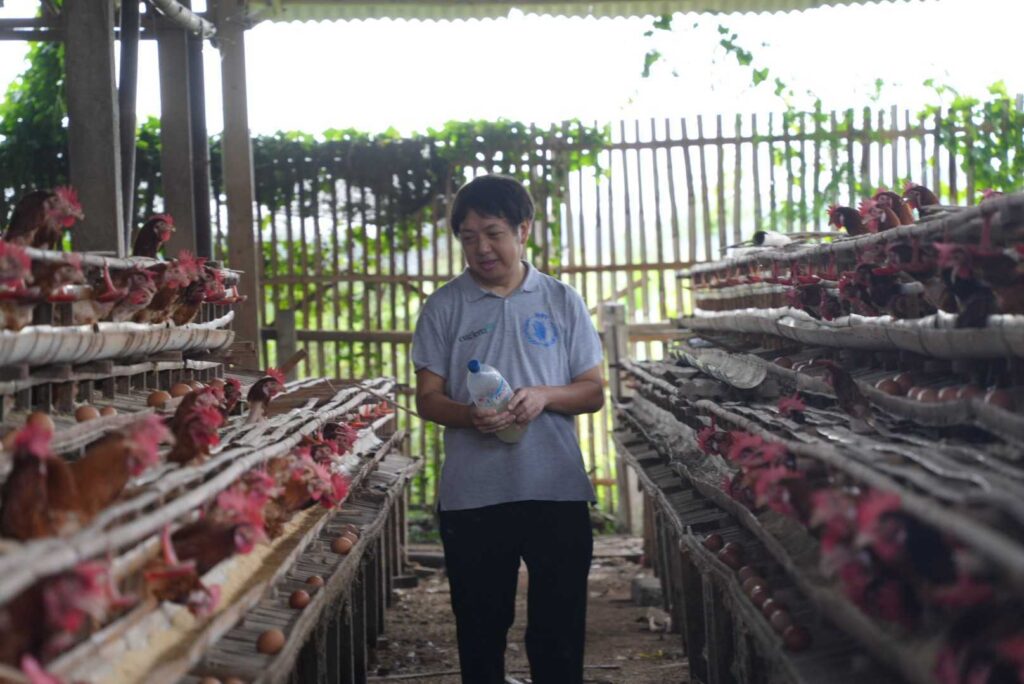
Study visit to a poultry farm on the use of microalgae in the agricultural sector in Indonesia
Introduction
This report provides an overview of the innovative use of microalgae in agriculture, with a specific focus on poultry farming in Indonesia's Blitar region. It encapsulates the insights gathered from a field visit conducted by members of Euglena Co., Ltd., on November 14, 2023. The visit aimed to explore the practical applications and benefits of microalgae liquid feed in poultry farming, a pioneering approach facilitated by the collaboration with ALBITEC. This report delves into the current state of poultry farming in Indonesia, the significant role of the Blitar region in egg production, and the transformative impact of microalgae-based feedstocks in enhancing poultry health and productivity.

About ALBITEC Ltd
ALBITEC is an innovative company renowned for its pioneering work in the field of biotechnology, specifically focusing on the development and application of microalgae-based solutions. With a strong emphasis on sustainability and eco-friendly practices, ALBITEC has been instrumental in researching and producing high-quality microalgae products for various industries, including agriculture and aquaculture. Their expertise in biotechnological processes has enabled them to create effective, nutrient-rich microalgae formulations, which are increasingly being used as alternative feedstocks in livestock and poultry farming. ALBITEC's commitment to enhancing agricultural productivity while minimizing environmental impact positions it as a leader in the realm of green biotechnology.
Current State of Poultry Farming in Indonesia
- Overview: Poultry, including chicken meat and eggs, are vital in Indonesia, classified as crucial staples and strategic protein sources. These commodities, valued at USD 44.64 billion, contribute 60% to the livestock industry's income and employ 10% of the national workforce.
Poultry Farming in Blitar, Indonesia
- Regional Significance: Blitar Regency in East Java is a key center for livestock production, especially poultry. It meets 75% of the egg demand in East Java, with notable production centers in Srengat, Ponggok, and Kademangan. Blitar is chosen for research due to its large population of laying hens.
Use of Microalgae in Poultry Farming
- Demand for Alternative Feedstocks: There is a growing need for alternative, high-nutrient feedstocks for domestic livestock and poultry to support increasing food demands and produce functional foods with health benefits.
- Benefits of Microalgae: Microalgae, with their diverse nutritional profile, offer several advantages. They improve animal growth, egg and meat quality, feed conversion, immune response, and disease resistance. They also present cholesterol-lowering effects and increase reproductive performance and weight control in animals.
- Global Adoption: The use of microalgae as feed supplements is practiced in many Asian countries, including Japan, China, and Korea, and is spreading to other regions like the United States and the United Kingdom.
- Impact on Egg Quality: Microalgae feedstocks enhance the nutritional value of eggs by increasing omega-3 fatty acids (ω-3 FAs), which are crucial for brain development and cardiovascular disease prevention. Eggs from hens fed with microalgae-enriched feed contain higher beneficial fatty acids compared to conventional feed. The use of specific microalgae like Nannochloropsis gaditana results in a significant increase in ω-3 FAs in egg yolks.
- Optimization of Egg Properties: The addition of Nannochloropsis oculata in hen feedstocks increases the lutein and zeaxanthin content in eggs, resulting in darker, more nutrient-rich yolks. Diets rich in carotenoids from microalgae also improve egg weight, feed conversion, eggshell thickness, and other desirable physical properties.

At a poultry farm utilizing ALBITEC's microalgae liquid feed, a simple yet effective method of feed adjustment is practiced: a bottle cap of liquid feed is added to 250 liters of water, thoroughly mixed, and then combined with the livestock feed. This approach significantly enhances the farm's efficiency. Chickens, starting to lay eggs at about 22 weeks, reach peak production at 32 weeks, and with the improved nutrition from the liquid feed, they can continue producing eggs until 46 to 56 weeks. The enhanced diet, requiring just 100 grams of feed per chicken per day (down from 120 grams), not only yields higher quality eggs, enriched with omega-3 and boasting an extended shelf life, but also reduces feed production costs from 8,400 to 7,500 Indonesian rupiahs per kilogram, thanks to the use of a self-formulated natural feed blend. These advancements have positively impacted the farm's size, shipping volume, sales, and profitability, demonstrating the transformative effect of ALBITEC's innovative feed solution.

This report compiles the relevant information to understand the scope and impact of microalgae use in poultry farming, particularly in Indonesia's Blitar region. It highlights the importance of poultry farming in Indonesia, the significance of Blitar in egg production, and the various benefits of incorporating microalgae as a feed supplement. The report also acknowledges the global trend in adopting microalgae-based feedstocks and their specific effects on improving the quality of poultry products, particularly eggs.
